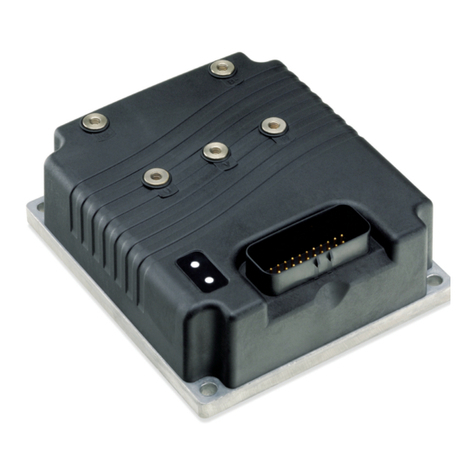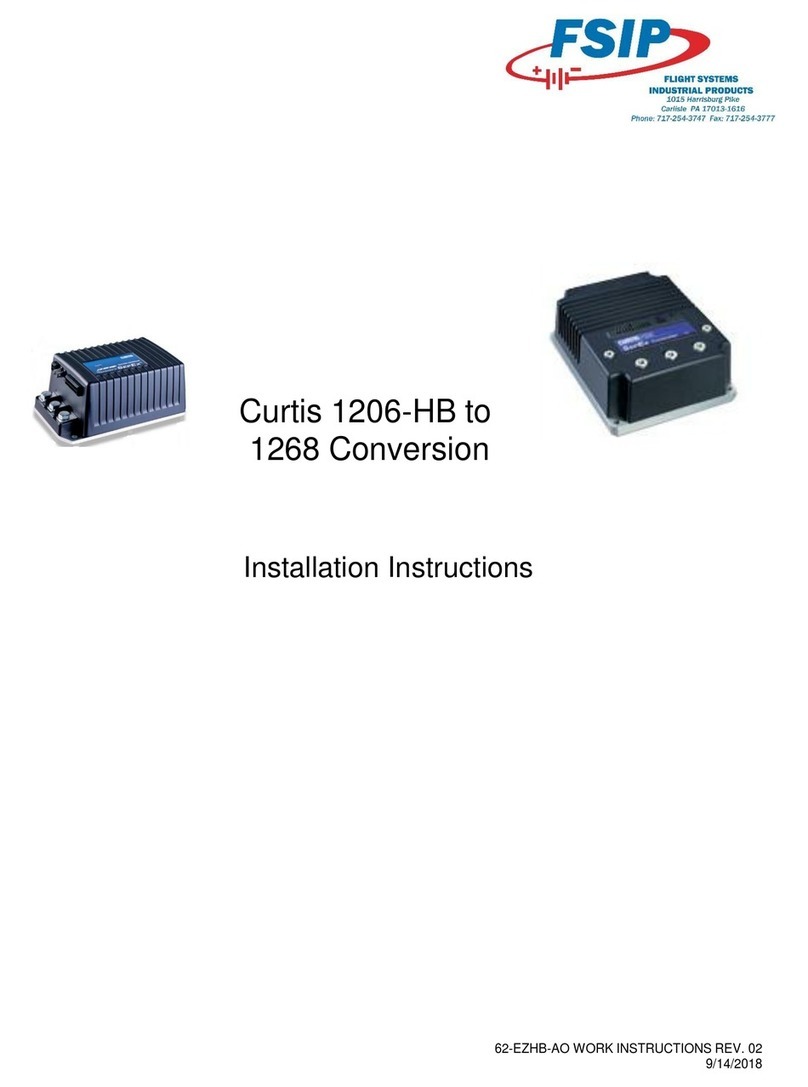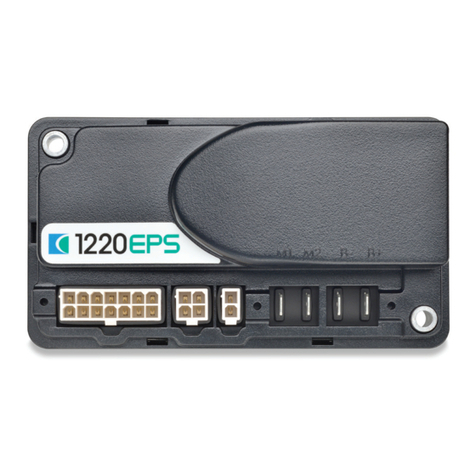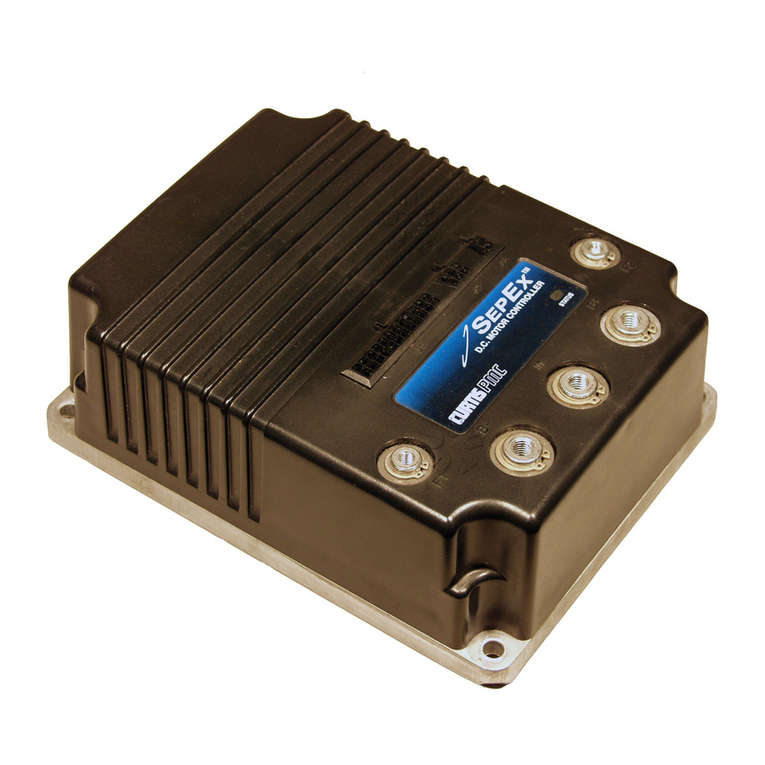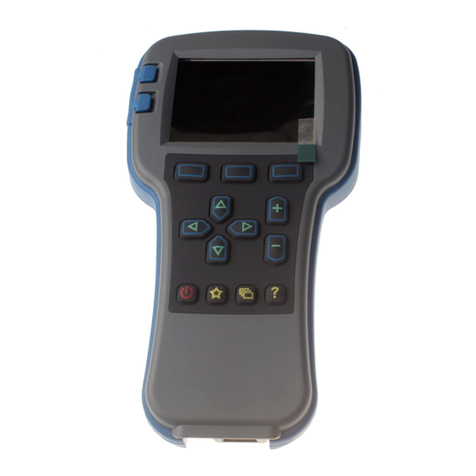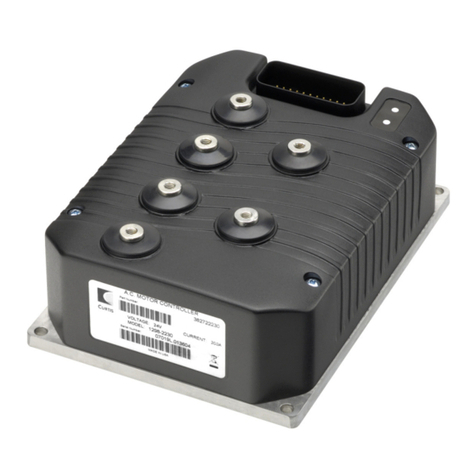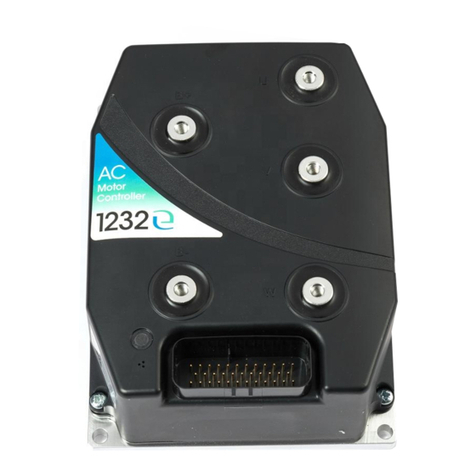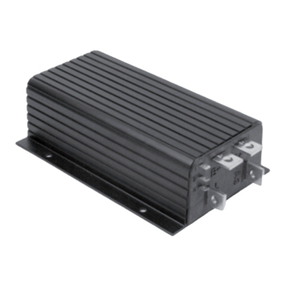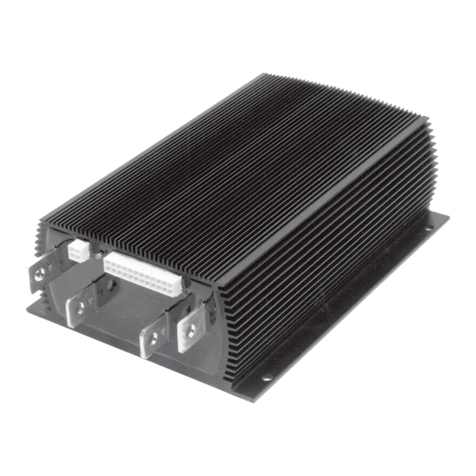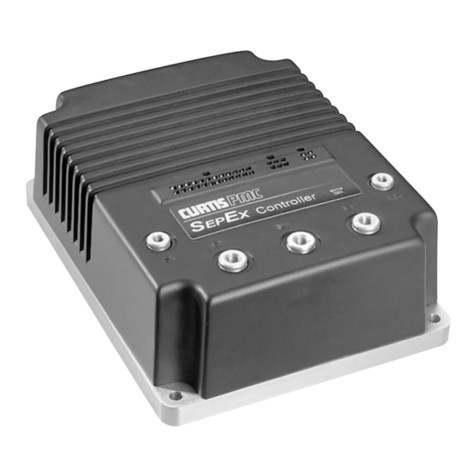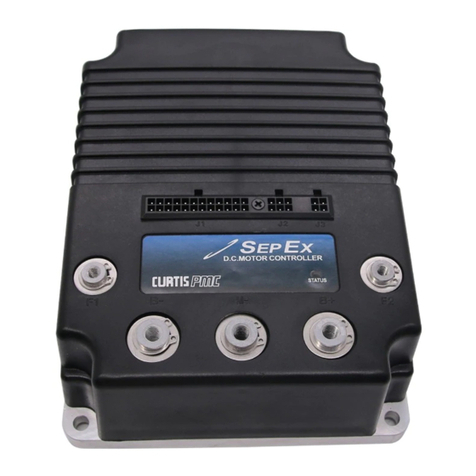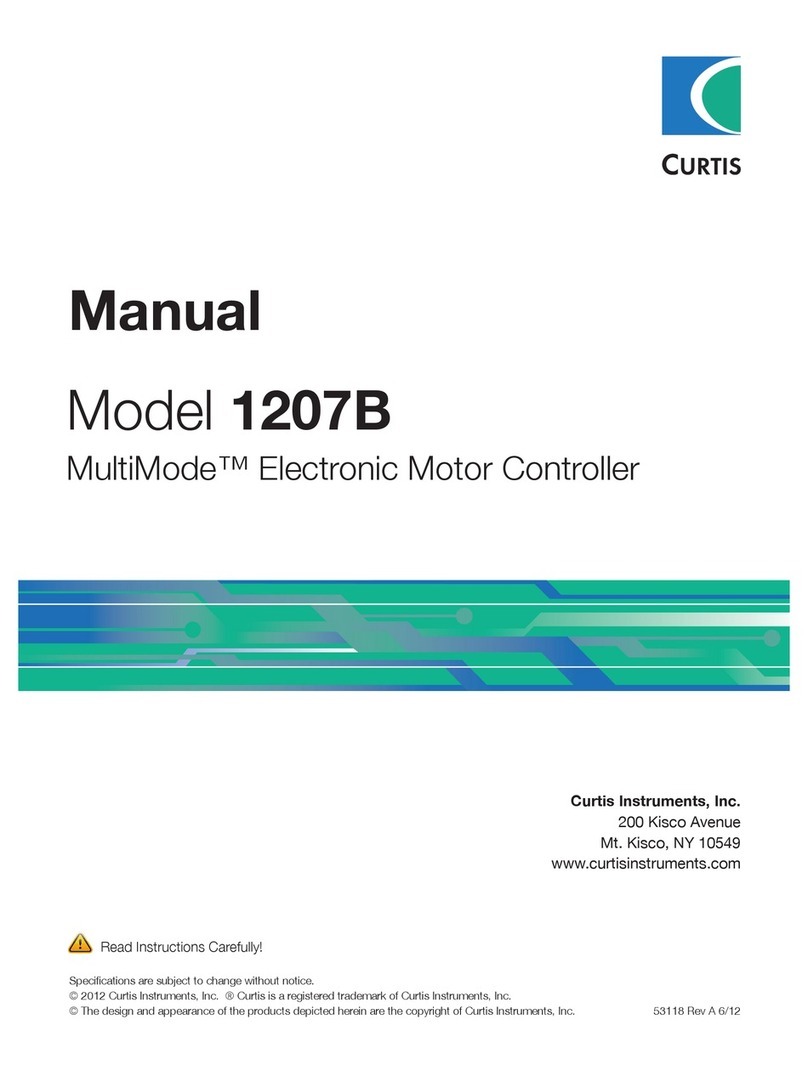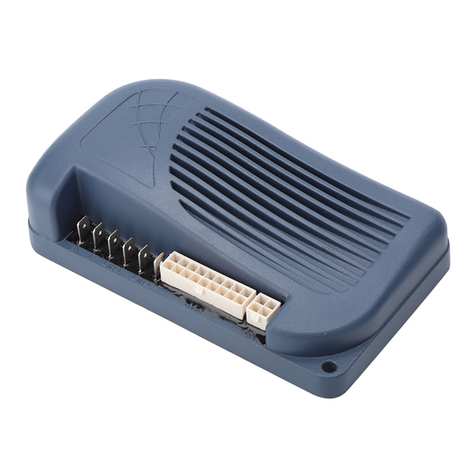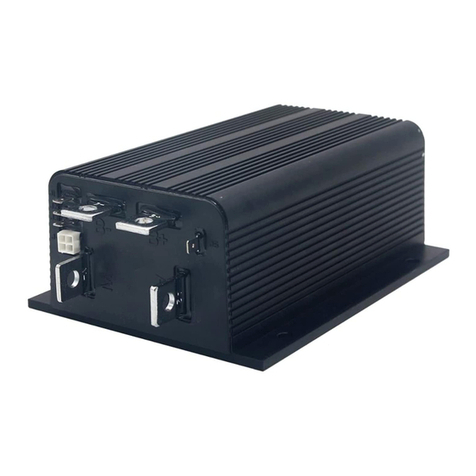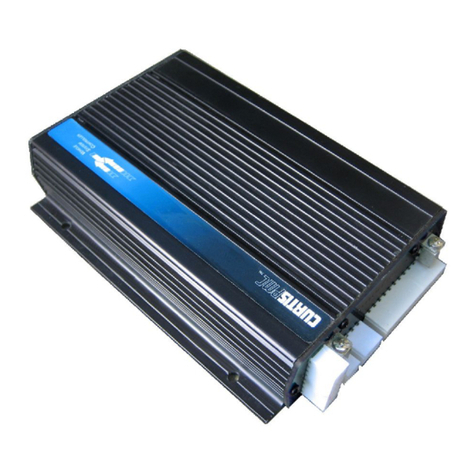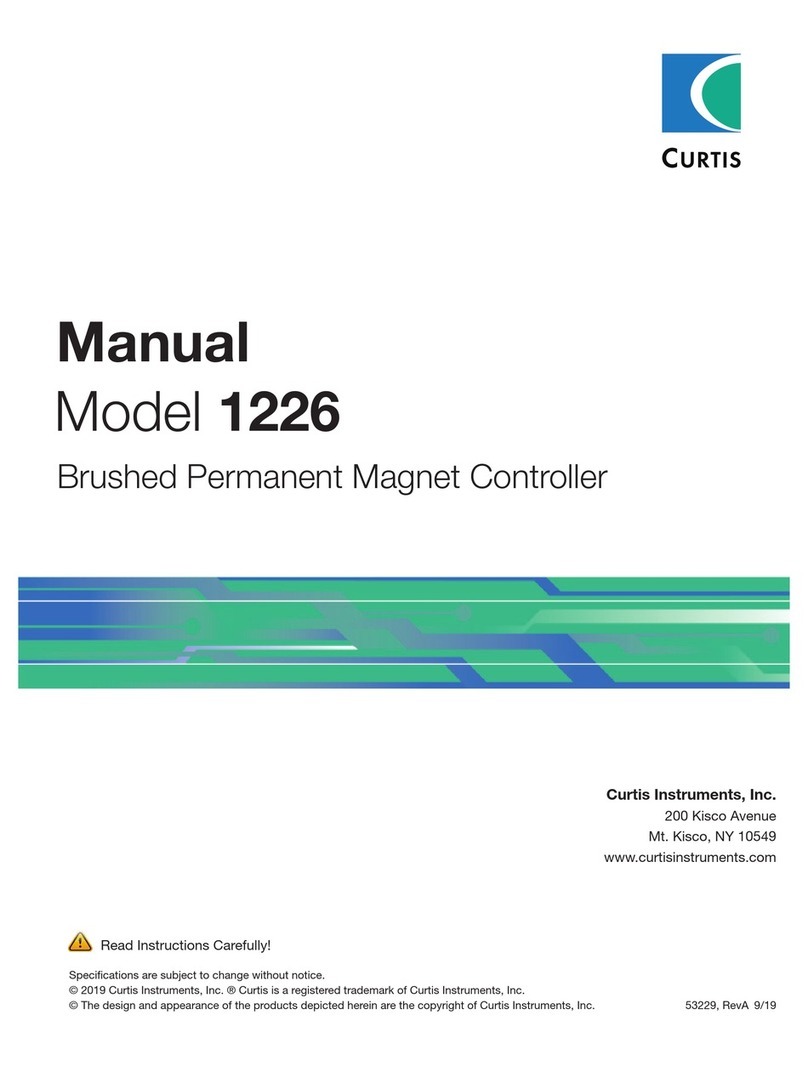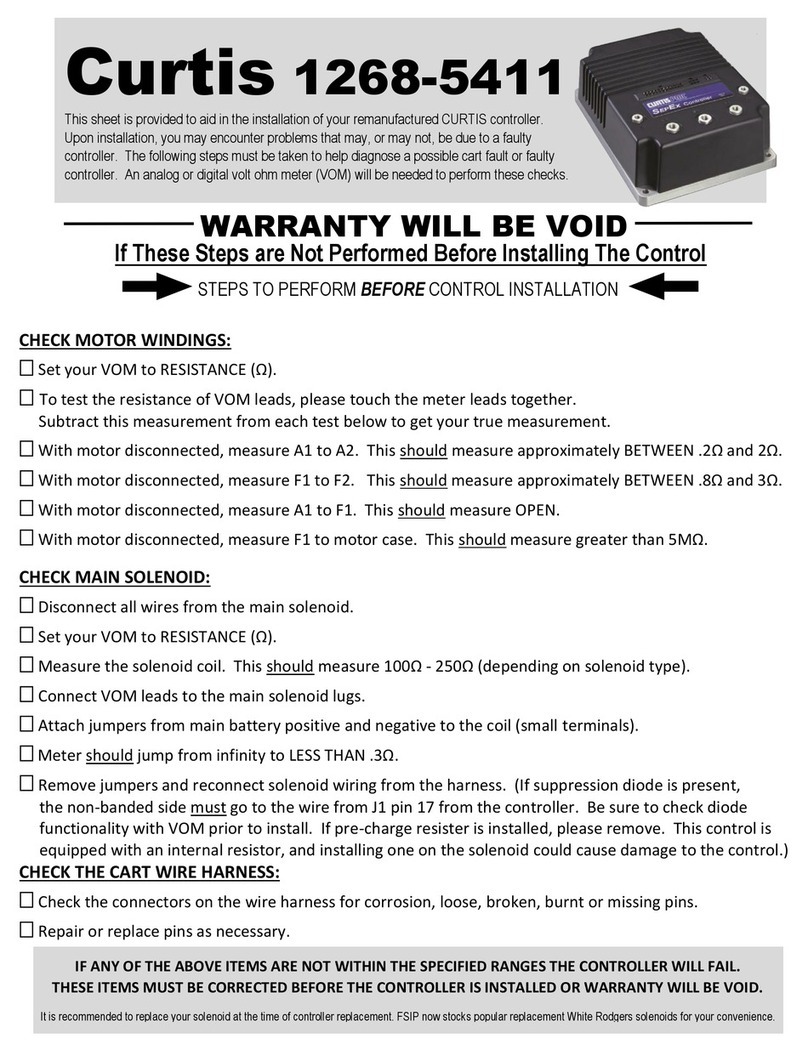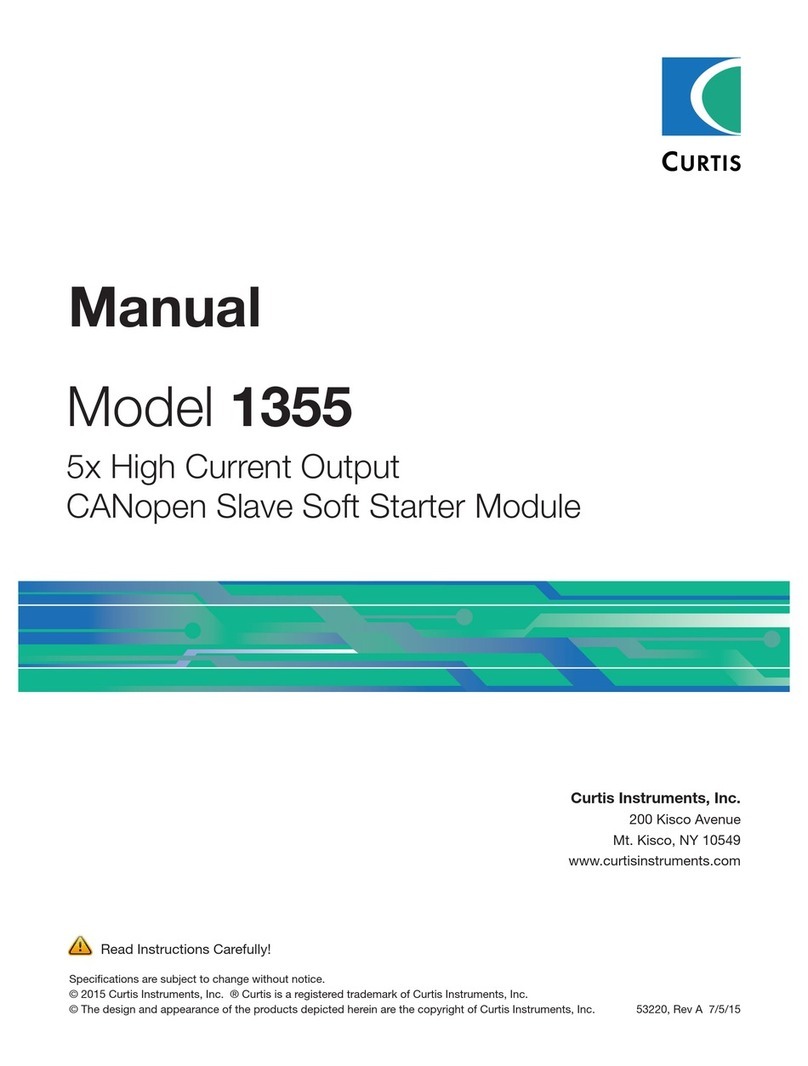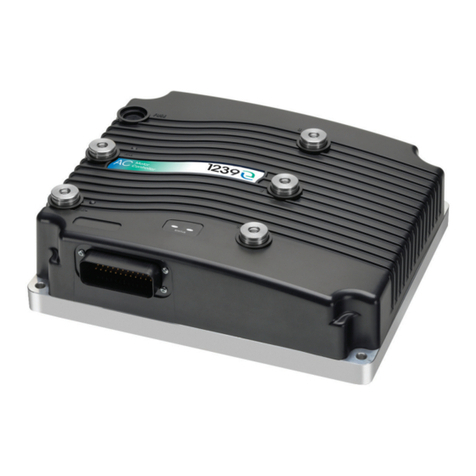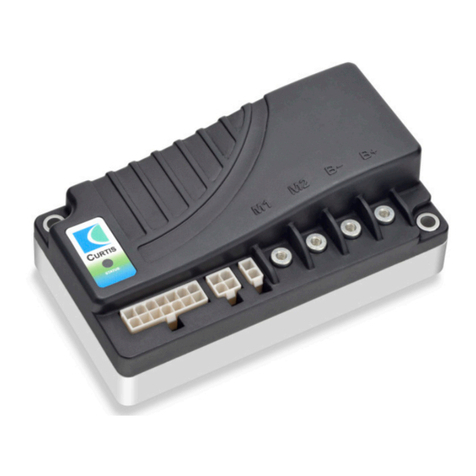
2 Curtis 1212 Manual
1 — OVERVIEW
✓ The vehicle is brought to a complete stop before the electromagnetic
brake is applied, ensuring safe and secure stops under all conditions
✓ Charger inhibit input prevents driving while charger is attached
✓ Key Off Decel function ensures a smooth “brake to stop” when the
key is turned off while driving or when a fault occurs that requires the
vehicle to stop
✓ Anti-Rollback/Roll-forward function provides smooth and safe vehicle
control on hills and ramps
✓ Internal main contactor provides secure power-off
✓ Boost current gives a brief boost of current greatly improving
transient loads such as starting on a hill, crossing thresholds, etc.
Easy Installation and Setup
✓ Industry standard footprint, mounting centers, and wiring allows
drop-in replacement of other controllers
✓ Model 1212 controllers are easily programmed with Model 1311
handheld or Model 1314 PC programmers, or can be supplied
pre-programmed
✓ Accepts all standard throttle types, including single-ended, wigwag,
and unipolar
✓ Simplified troubleshooting and diagnostics
✓ Standard Mini-Fit Molex Jr. and Faston terminals provide proven,
robust wiring connections
Valuable Additional Features
✓ Optional Push Switch input releases the brake and allows the motor
to free-wheel
✓ Push-Too-Fast feature restricts the vehicle’s speed while it is being
pushed, even with the key off or the batteries disconnected
✓ Automatic compensation for changes in motor condition to ensure
optimum drive preformance at all times
✓ Multi-mode provides for two distinct and programmable control
modes (indoor/outdoor)
✓ Power Saver function prevents the controller draining the battery
when the vehicle is inactive
✓ Battery Discharge Indicator output
✓ Optional Speed Inhibit input offers flexibility to reduce speed or
prevent drive under certain conditions, such as when the seat is lifted
✓ Adjustable brake hold voltage reduces heating of the brake coil
✓ Reverse Beeper function alerts bystanders
✓ Electronics sealed to IPX5
